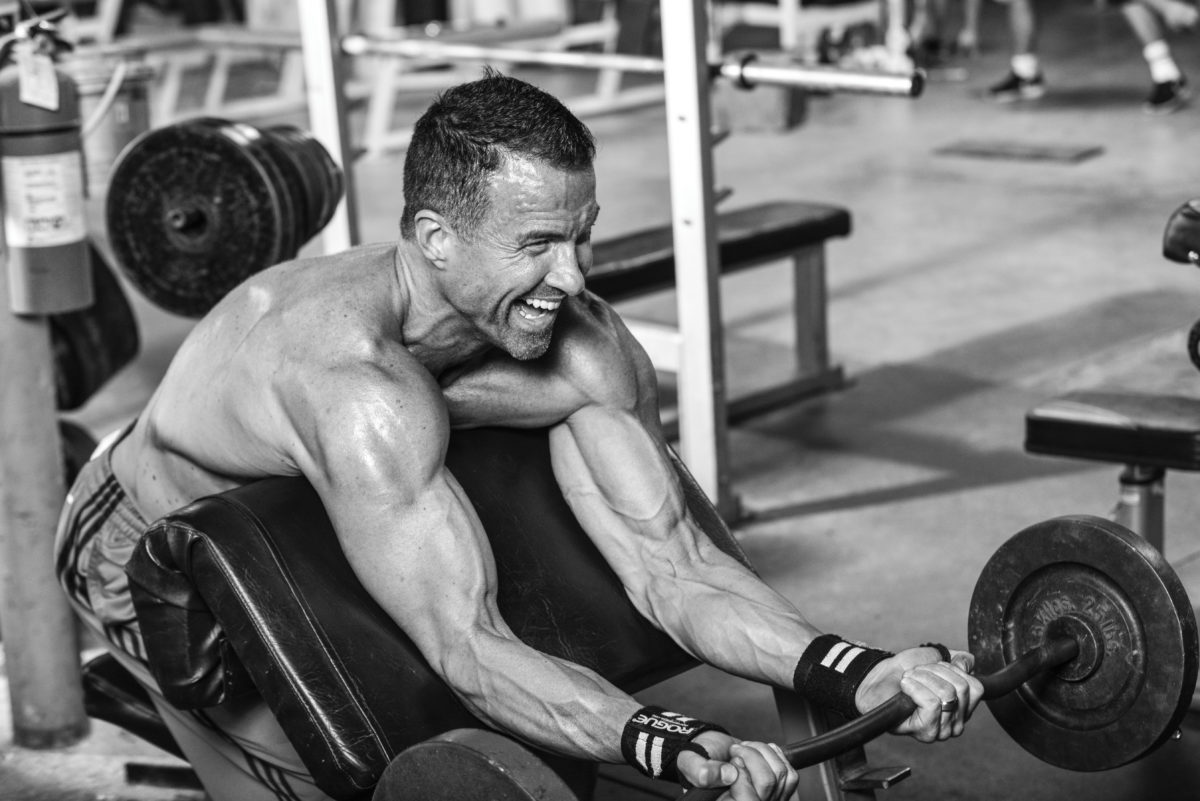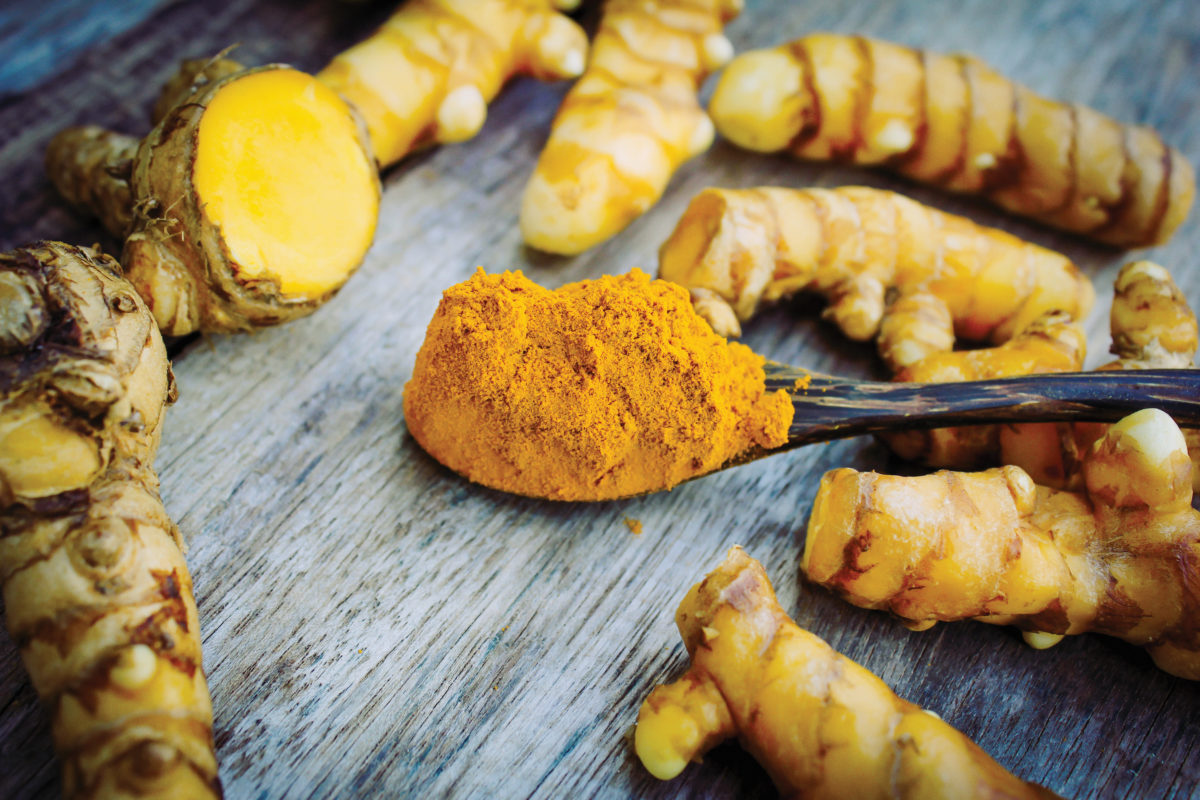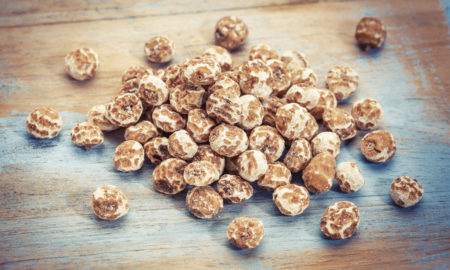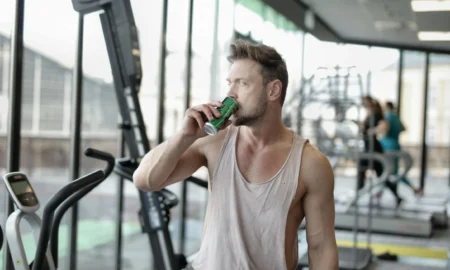

Expert advice for over-40 athletes about training, supplementation, nutrition, hormones, and more.
By Jay Campbell and Jim Brown
Chris: Are there any benefits to doing cardio sessions immediately after my strength training as opposed to one single 60-minute cardio-only session? My goal is fat loss.
Overall, if you get cardio in, it will add to your calorie deficit, ultimately leading to fat loss. There are a couple of things to consider. If you start cardio with glucose in the bloodstream, you must train through it to get into burning fat. If you do fasted cardio, you are cutting through a little time to get into fat-burning mode (when waking up) due to lower blood sugar (reduced insulin signal), as your body will burn fat preferentially. This assumes you’re not doing high-intensity exercise (like intervals), which demand glucose, forcing your body to break down proteins to accommodate the energy demand. We personally like to perform 15- to 20-minute cardio sessions post-weight training. We have always felt this helps recovery and keeps metabolism elevated, in addition to managing body-fat levels. When we are dieting, we will add another 30-minute session either before bed or fasted upon waking.

Sam: Please comment on the shortcomings of a traditional 5×5 program for older individuals.
For strength alone it can be effective; however, for muscular hypertrophy … not so much. If we’re talking about an older person, 38 and above, the tendons and ligaments just aren’t as pliable. You also don’t possess the same amount of synovial fluid in your joint capsules that you had in your late teens and twenties. What this means is that subjecting those same tendons to heavy loads isn’t the best choice. Taking these factors into account, it’s why we have always recommended a higher rep range for an aging athlete. If you’re an individual whose body is adapted to lifting in the lower rep range, you’re certainly at less risk than a 40 year old who is new to training.
Frank: What are must-take supplements for guys over 40?
Depending on your personal lipid profile, let’s just assume we are talking about the average guy who is not too far out of the norms. These mainly focus on vascular/cardiac health and inflammation.
- CoQ10: We have poured through the research data and are convinced the reduced form of CoQ10, called ubiquinol, is a preferred source for bioavailability. Some people will argue that fact and that’s fine. We think taking either form will provide benefits. We tend to look for companies that have the trademarked ingredient from Kaneka. If you’re looking at the bottle, it will have this listed in supplement facts as “Ubiquinol (Kaneka QH),” this is to ensure you are getting the milligram-for-milligram dose from a source that is verified. This stuff isn’t cheap, so don’t get ripped off. We always say to take as much as you can afford. Jim has been taking 300 milligrams for the last 10 years. Always take it with some dietary fat, as this is fat-soluble.
- Curcumin: We always look for a standardized extract (95 percent curcuminoids or greater), which is considered the main constituent responsible for most of the benefits from curcumin. Normally for overall health and antioxidant activity, you can lower your dose to between 600 and 900 milligrams a day. If you’re trying to reduce inflammation (especially when suffering from soft-tissue injury or joint trauma), we have gone as high as nine grams daily with amazing effects. We recommend formulas with BioPerine or black pepper extract, as it is thought to assist with absorption. Again, take with fat.
- Omega-3 Fatty Acids: This should be no surprise. Unless you are eating enough fish to cover this, we would supplement. These should be sourced from wild caught, cold water small fish species. Normal dosages are in the 3-5 gram range.
- Krill Oil: We know, more fish oil? Simply put, omega-3 is thought to be beneficial for vascular inflammation among other things, where krill oil has been shown to dramatically affect HDL levels positively. Most data is in the two-gram range, so that’s how we dose it.
- B-Complex: Here again we’re assuming normal diet and going after reducing homocysteine levels. Main point here is we would take a complex; you don’t need massive doses, but normally 50 to 100 milligrams complex more than covers the bases.

Anthony: My doctor says my testosterone levels are fine, but I feel like shit. How can I get on TRT?
I would question what your levels are. Most physicians are basing their decisions on information they received years ago in medical school. The guidelines most of them are presented with today are not standard practice for the progressive physicians who are currently in the trenches. You need to look for someone who is actively treating patients with testosterone replacement therapy. These will be the doctors with a practice-based knowledge of therapeutic testosterone usage. These doctors manage you in terms of diagnosing your symptoms and not just the “guideline” range printed out from your total testosterone and free testosterone lab values.
We recommend working with a physician who is not only concerned with your lab values but your symptoms as well. As always, we refer you to The Definitive TRT MANual for more education on mastering the usage of testosterone in the context of health and longevity. IM






















You must be logged in to post a comment Login